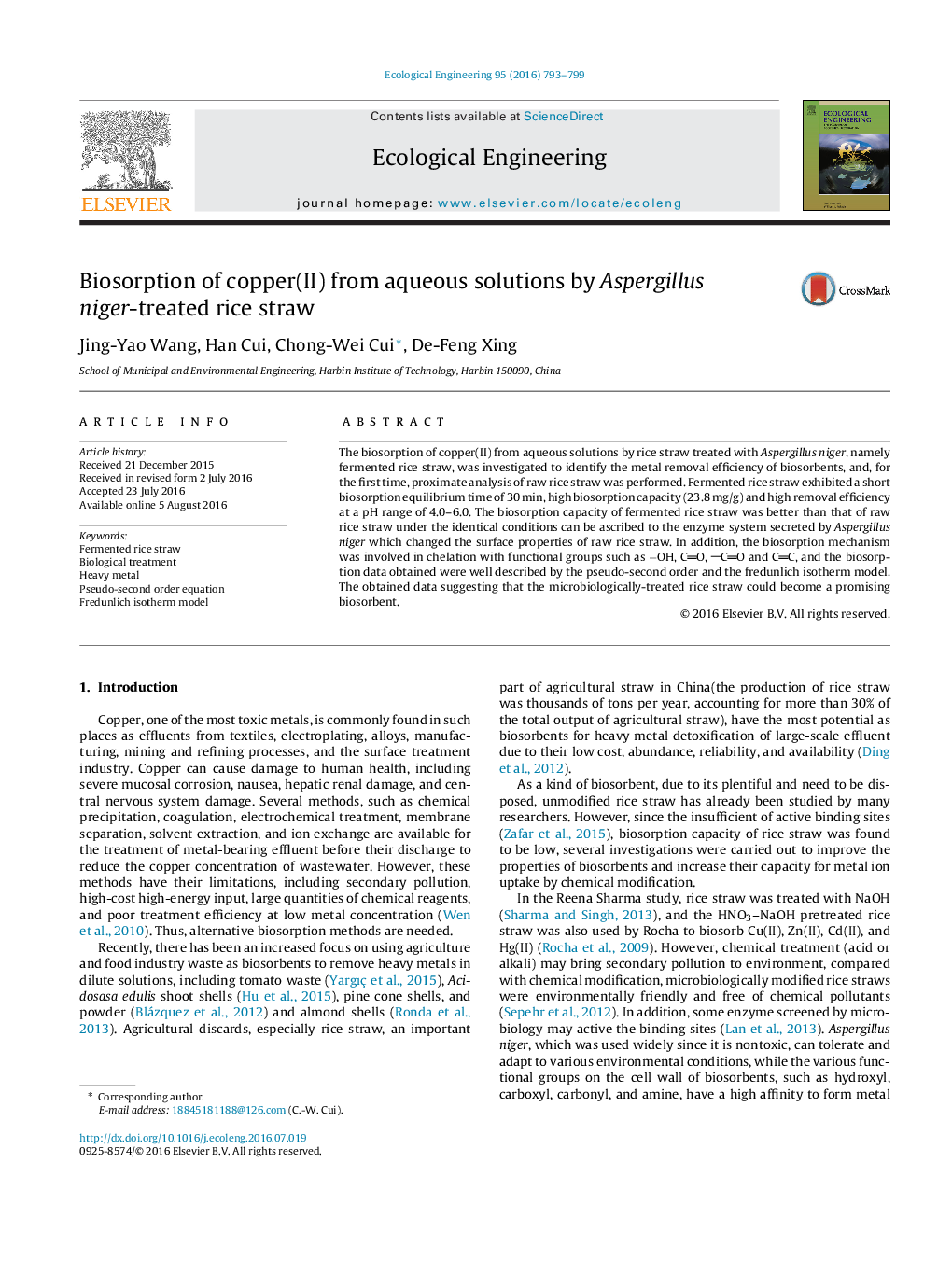| کد مقاله | کد نشریه | سال انتشار | مقاله انگلیسی | نسخه تمام متن |
|---|---|---|---|---|
| 4388510 | 1618004 | 2016 | 7 صفحه PDF | دانلود رایگان |

• Aspergillus niger-treated rice straw was a kind of effective biosorbents.
• SEM-EDX shown that the properties of fermented rice straw surface was changed by Aspergillus niger, with the reproduce of Aspergillus niger, which leading to a higher biosorption capacity. Pseudo-second order equation and Fredunlich model can simulate the biosorption.
• The biosorption capacity of fermented rice straw was significantly greater than that of raw rice straw, and the best pH was 4 of the fermented rice straw.
The biosorption of copper(II) from aqueous solutions by rice straw treated with Aspergillus niger, namely fermented rice straw, was investigated to identify the metal removal efficiency of biosorbents, and, for the first time, proximate analysis of raw rice straw was performed. Fermented rice straw exhibited a short biosorption equilibrium time of 30 min, high biosorption capacity (23.8 mg/g) and high removal efficiency at a pH range of 4.0–6.0. The biosorption capacity of fermented rice straw was better than that of raw rice straw under the identical conditions can be ascribed to the enzyme system secreted by Aspergillus niger which changed the surface properties of raw rice straw. In addition, the biosorption mechanism was involved in chelation with functional groups such as −OH, CO, CO and CC, and the biosorption data obtained were well described by the pseudo-second order and the fredunlich isotherm model. The obtained data suggesting that the microbiologically-treated rice straw could become a promising biosorbent.
Journal: Ecological Engineering - Volume 95, October 2016, Pages 793–799